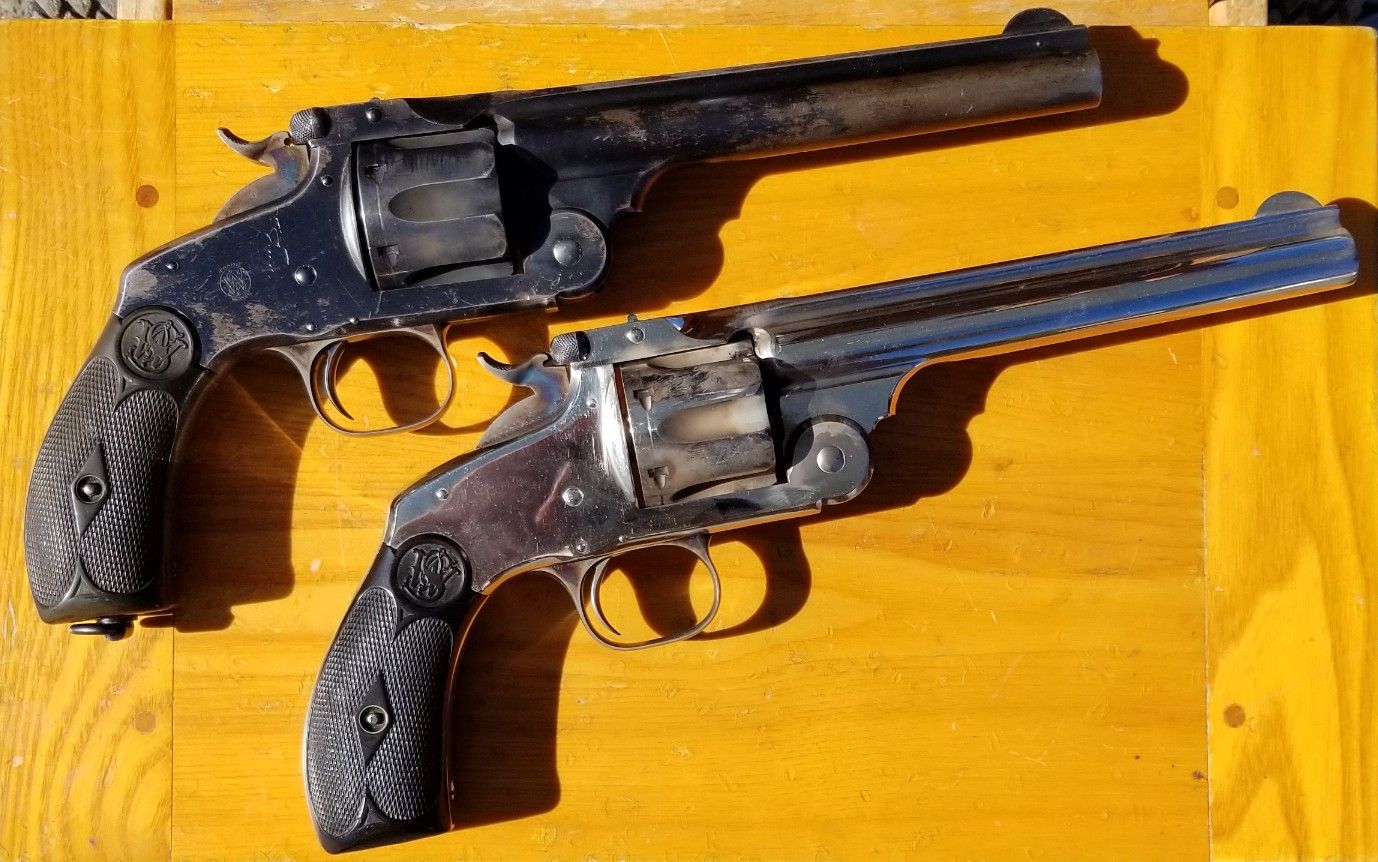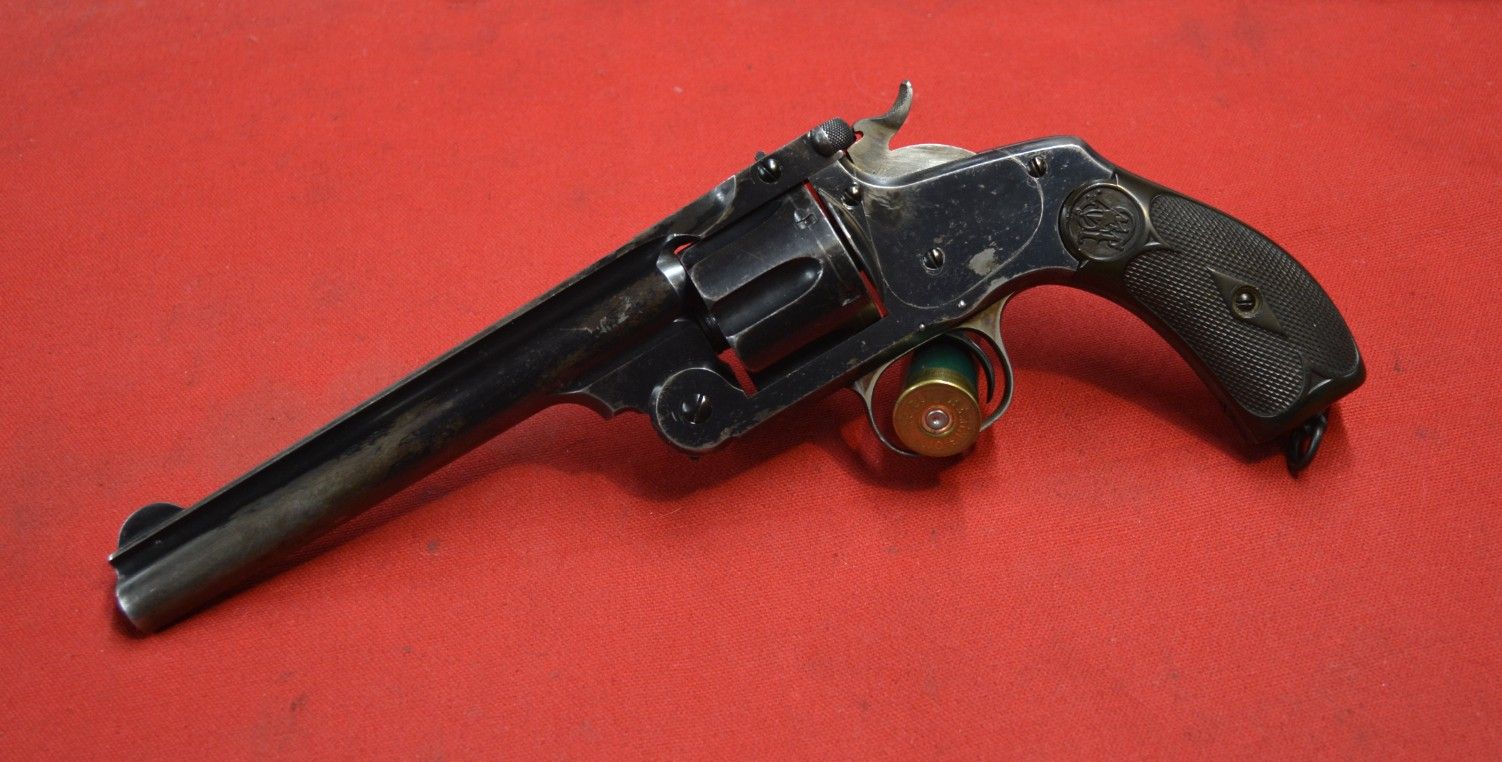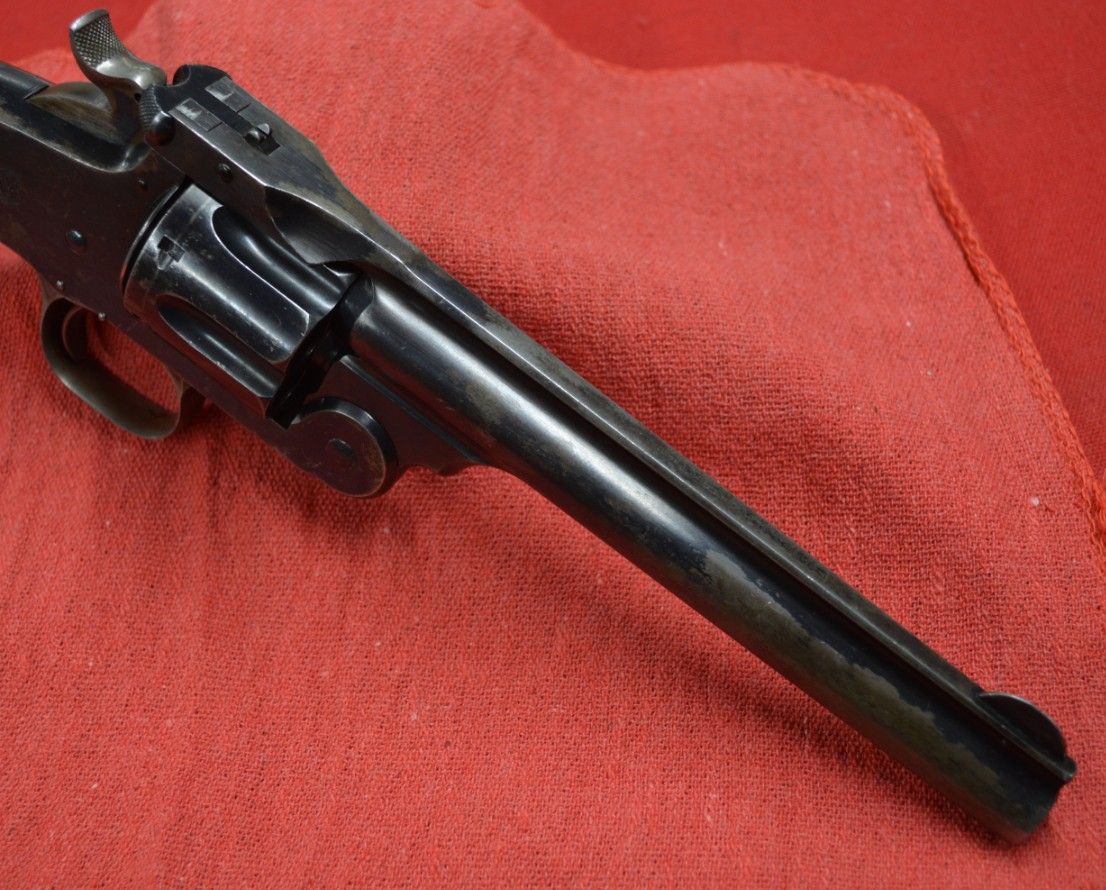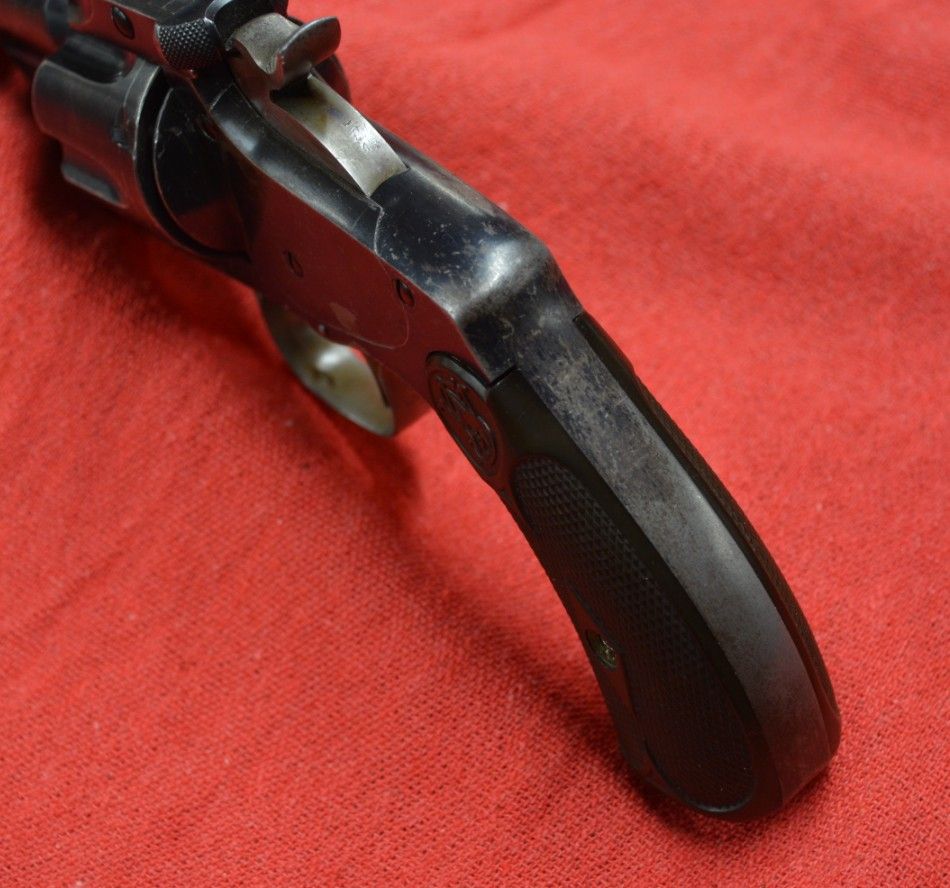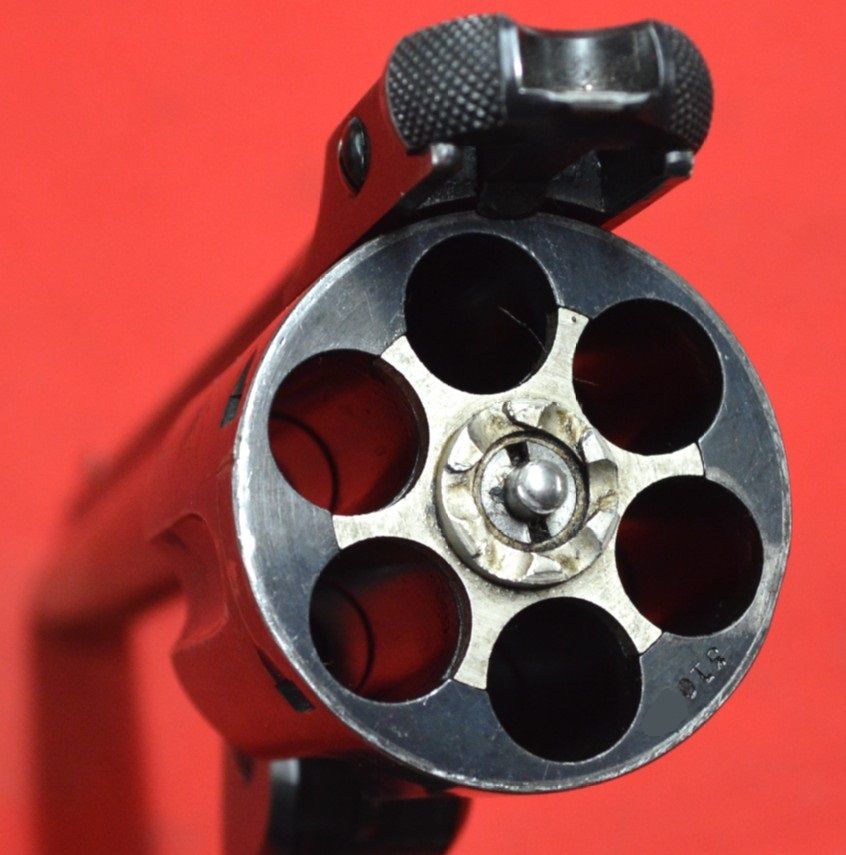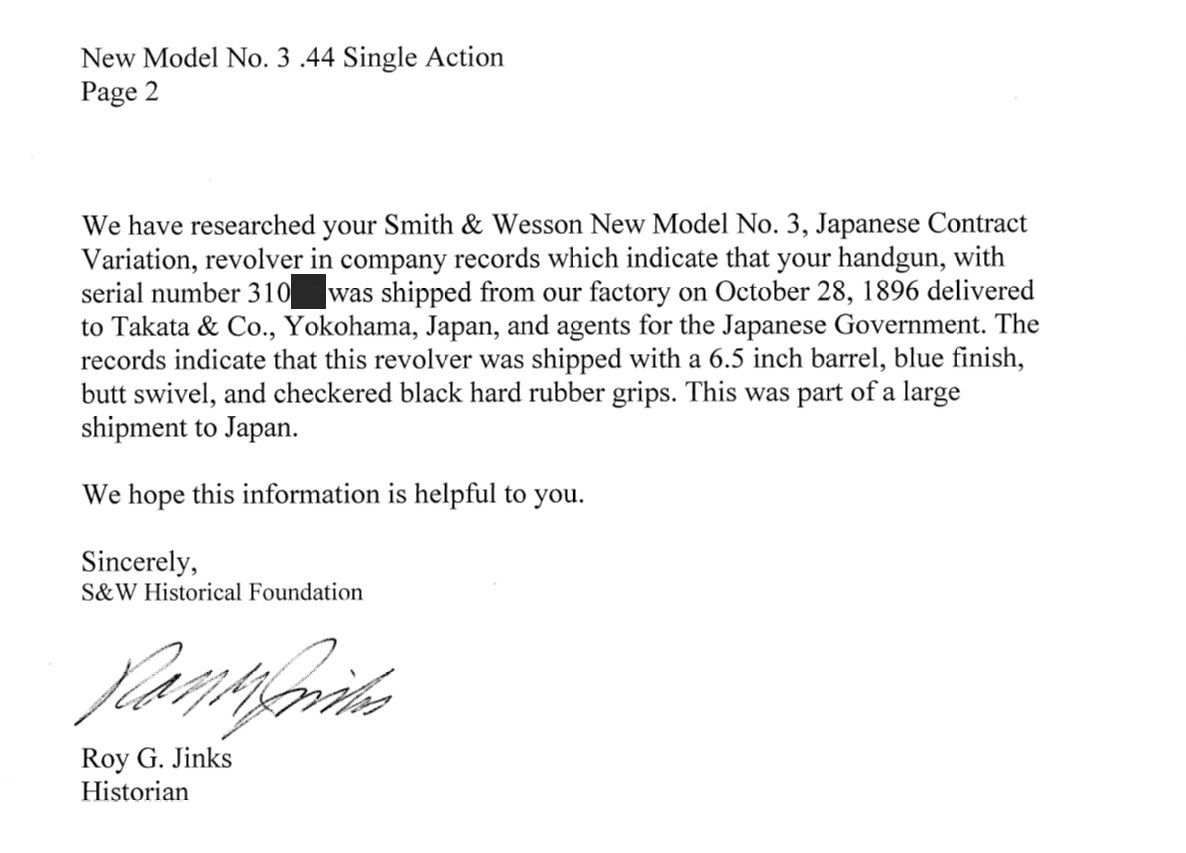Driftwood Johnson
New member
Howdy
A few months ago I attended a local gun show. Medium sized, lots of tables. I really wasn't looking for anything special except I needed targets and I knew the guy I usually buy them from would probably be at this show.
First stop I stopped at the table of a fellow S&W collector to see what he had for sale. He had a New Model #3 Target Model chambered for 32-44, the old target round. It did not function properly and I was not interested because that cartridge is no longer manufactured. Perhaps I could make up rounds from 32 S&W Long, but I really don't know. Anyway, I told him I really was not interested in it. He also had a Baby Russian in the box, but he wanted a lot of money for it, so I passed on that too.
When I got to the guy selling targets I realized like a dope I had forgotten my checkbook. No problem says I, I have been spending too much on guns recently anyway. So I bought the targets with cash and moved on. A couple of more items interested me, but not enough to make an offer, besides, I did not have my checkbook.
Then halfway through the show I spotted what I thought at first was a S&W Russian Model. I asked to see 'the Russian' but as I handled it I realized it was a New Model Number Three, and not a Russian. The dealer did not seem to know the difference, but I sure did. I inspected it very carefully. The finish had a good deal of wear, but the lock up was perfect, and the chambers and bores looked like it had just left the factory yesterday. I checked everything, checked everything for function and it was flawless. I asked him what he wanted for it, and he told me. Then I told him that like a dope I had forgotten my checkbook. He said he would be there all day.
So I raced through the rest of the show, making sure there was not anything else I was interested in. Then I jumped in my car and drove home 45 minutes to retrieve my checkbook. Another 45 minutes back, paying again to enter the show, I hoped it was still there.
It was. I was sure I had lost my bargaining position, since I was obviously panting to buy it. I asked again what he wanted, he gave me the same figure, and I asked if he would take $300 less. He said he would take $200 less and we sealed the deal.
Then I ran home with my new treasure. A S&W New Model Number Three, chambered for 44 Russian. A little bit of snooping found it shipped in 1896.
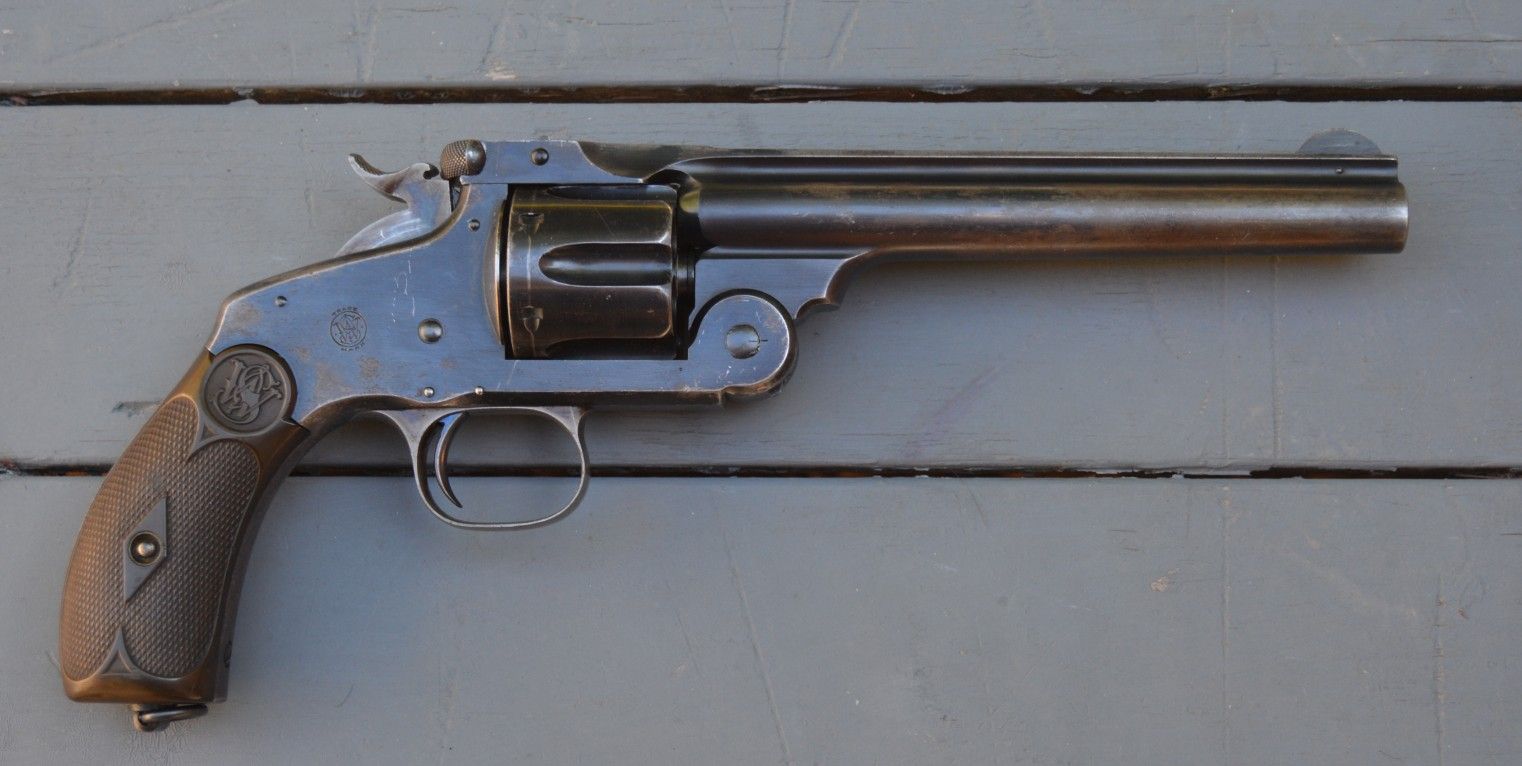
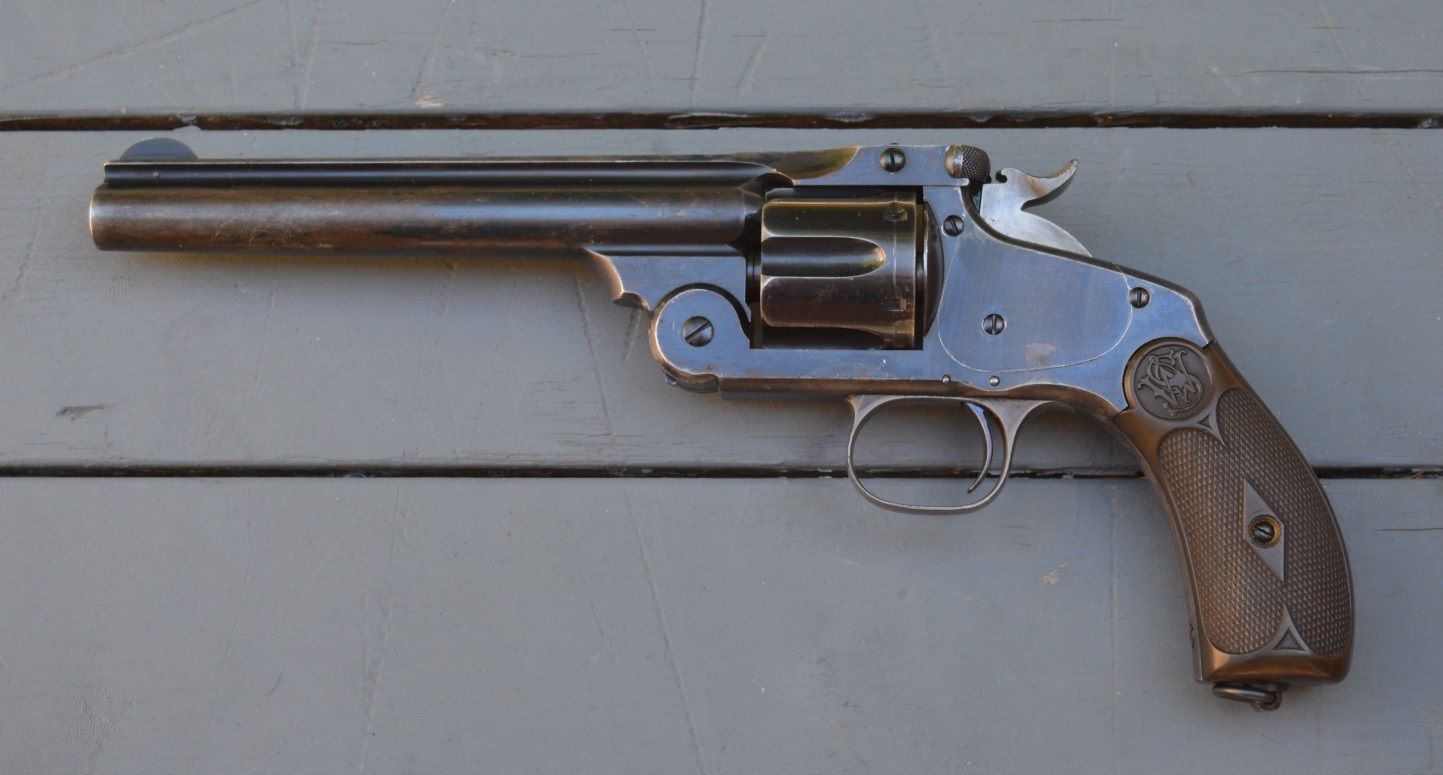
Since I fully intended to shoot it with Black Powder rounds, I stripped it down and did my normal preparation for a gun I intend to shoot with Black Powder rounds. Cleaned all the old oil and fouling out (there was very little fouling inside, I have since determined this gun has not been fired much). Then relubed everything with a light coating of Ballistol and buttoned it back up again.
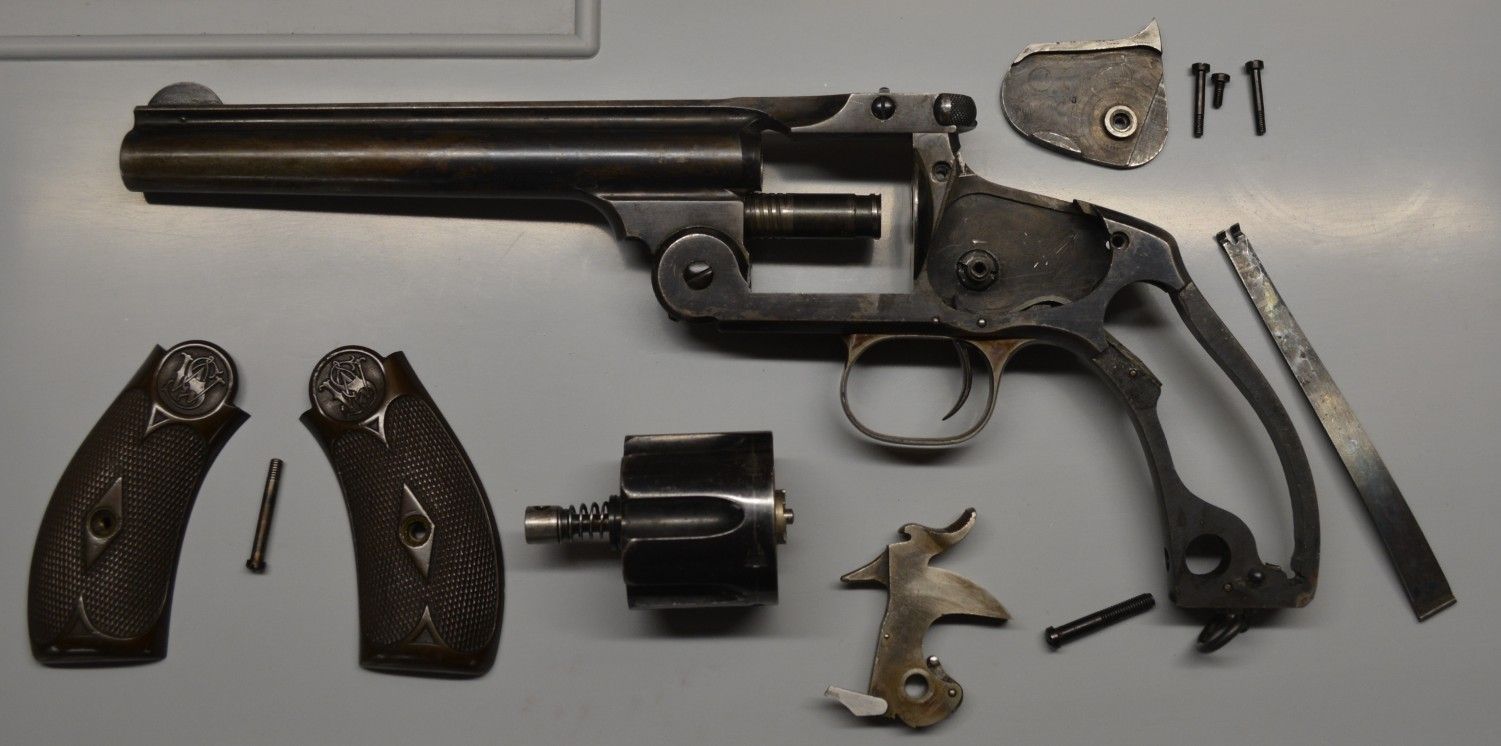
I had a box of my Black Powder 44 Russian rounds on hand, so the next day I took it to the range to see how well it would do. Not too shabby. The one flier was probably my fault, not the gun's. I fired about 40 rounds through it to give it a good workout. The trigger is very heavy, but other than that it worked flawlessly. (Disclaimer: Even though the target says 25 yard slow fire, I was shooting a whole lot closer than that)
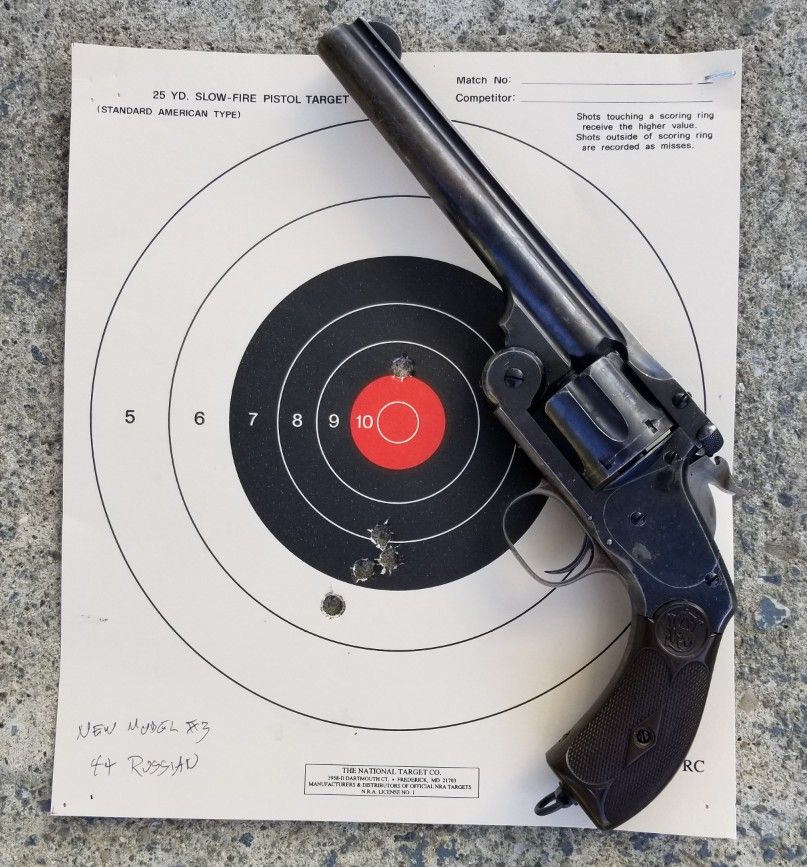
Took it home and cleaned it again that night.
I posted a few photos on the S&W Forum. I got some interesting tidbits. It seems that there was a large shipment of this model to Japan in 1896, and the speculation is that this one was part of that shipment. That may square with the odd marking next to the lanyard ring, which may or may not be a Japanese acceptance stamp.
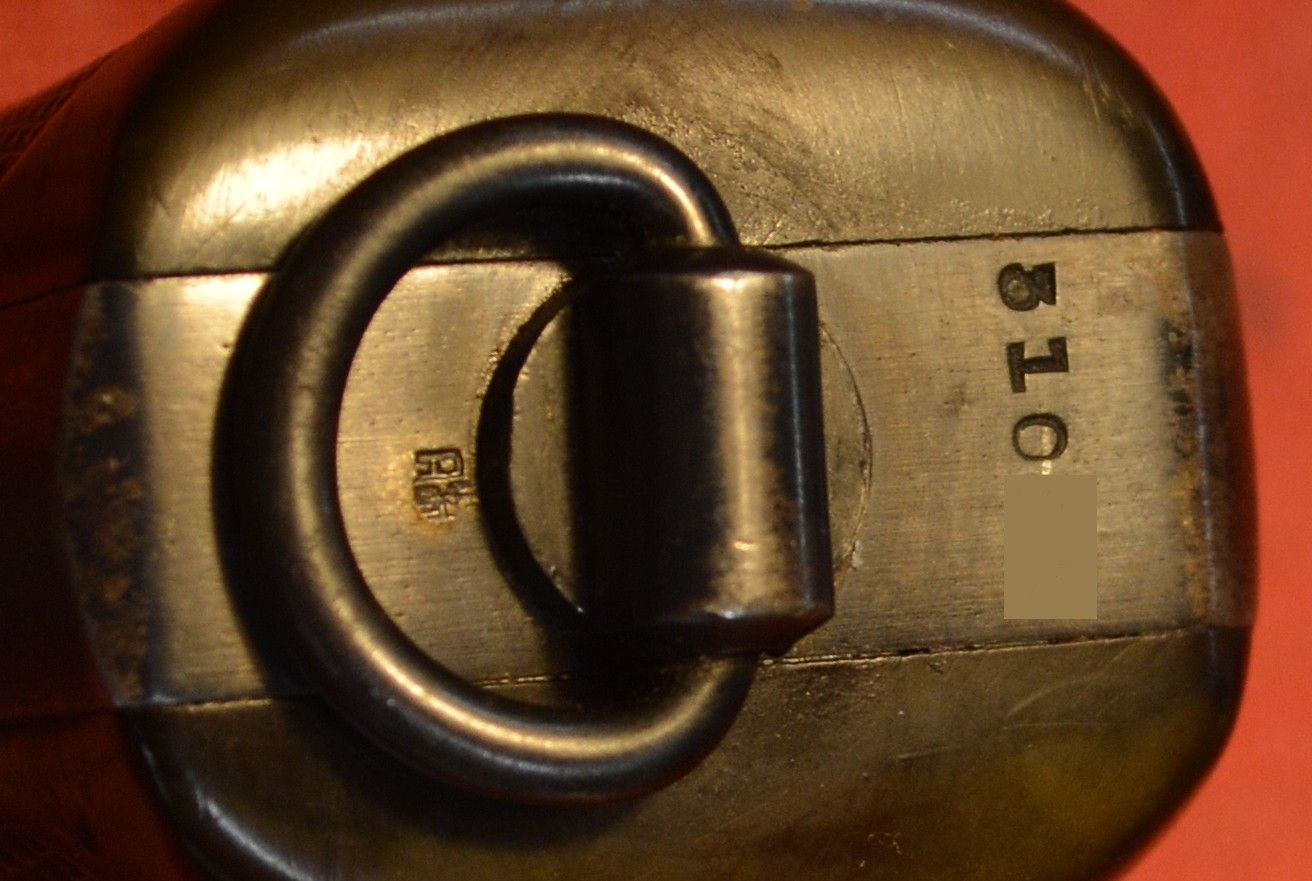
A few days later I sent off a request for a factory letter to find out for sure if it was part of that large shipment to Japan. It should be interesting what the letter says.
The moral of the story is, you never know what you will find at a gun show, so don't forget your checkbook.
Or maybe it was fate that I didn't have my checkbook when I found this gem?????
A few months ago I attended a local gun show. Medium sized, lots of tables. I really wasn't looking for anything special except I needed targets and I knew the guy I usually buy them from would probably be at this show.
First stop I stopped at the table of a fellow S&W collector to see what he had for sale. He had a New Model #3 Target Model chambered for 32-44, the old target round. It did not function properly and I was not interested because that cartridge is no longer manufactured. Perhaps I could make up rounds from 32 S&W Long, but I really don't know. Anyway, I told him I really was not interested in it. He also had a Baby Russian in the box, but he wanted a lot of money for it, so I passed on that too.
When I got to the guy selling targets I realized like a dope I had forgotten my checkbook. No problem says I, I have been spending too much on guns recently anyway. So I bought the targets with cash and moved on. A couple of more items interested me, but not enough to make an offer, besides, I did not have my checkbook.
Then halfway through the show I spotted what I thought at first was a S&W Russian Model. I asked to see 'the Russian' but as I handled it I realized it was a New Model Number Three, and not a Russian. The dealer did not seem to know the difference, but I sure did. I inspected it very carefully. The finish had a good deal of wear, but the lock up was perfect, and the chambers and bores looked like it had just left the factory yesterday. I checked everything, checked everything for function and it was flawless. I asked him what he wanted for it, and he told me. Then I told him that like a dope I had forgotten my checkbook. He said he would be there all day.
So I raced through the rest of the show, making sure there was not anything else I was interested in. Then I jumped in my car and drove home 45 minutes to retrieve my checkbook. Another 45 minutes back, paying again to enter the show, I hoped it was still there.
It was. I was sure I had lost my bargaining position, since I was obviously panting to buy it. I asked again what he wanted, he gave me the same figure, and I asked if he would take $300 less. He said he would take $200 less and we sealed the deal.
Then I ran home with my new treasure. A S&W New Model Number Three, chambered for 44 Russian. A little bit of snooping found it shipped in 1896.


Since I fully intended to shoot it with Black Powder rounds, I stripped it down and did my normal preparation for a gun I intend to shoot with Black Powder rounds. Cleaned all the old oil and fouling out (there was very little fouling inside, I have since determined this gun has not been fired much). Then relubed everything with a light coating of Ballistol and buttoned it back up again.

I had a box of my Black Powder 44 Russian rounds on hand, so the next day I took it to the range to see how well it would do. Not too shabby. The one flier was probably my fault, not the gun's. I fired about 40 rounds through it to give it a good workout. The trigger is very heavy, but other than that it worked flawlessly. (Disclaimer: Even though the target says 25 yard slow fire, I was shooting a whole lot closer than that)

Took it home and cleaned it again that night.
I posted a few photos on the S&W Forum. I got some interesting tidbits. It seems that there was a large shipment of this model to Japan in 1896, and the speculation is that this one was part of that shipment. That may square with the odd marking next to the lanyard ring, which may or may not be a Japanese acceptance stamp.

A few days later I sent off a request for a factory letter to find out for sure if it was part of that large shipment to Japan. It should be interesting what the letter says.
The moral of the story is, you never know what you will find at a gun show, so don't forget your checkbook.
Or maybe it was fate that I didn't have my checkbook when I found this gem?????


